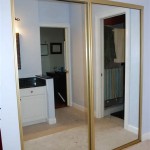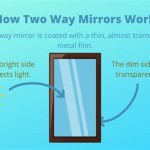How to Screen Mirror Android to Laptop Windows 10
Mirroring the screen of an Android device onto a Windows 10 laptop can be a useful technique for various scenarios. These include giving presentations, enjoying mobile gaming on a larger display, sharing photos and videos with a group, or simply working more efficiently by utilizing the laptop’s keyboard and mouse to interact with Android applications. Several methods exist to accomplish this, each with varying degrees of complexity and compatibility. This article will outline various approaches to screen mirroring, providing step-by-step instructions and troubleshooting tips for optimal performance.
Before initiating the mirroring process, it is crucial to ensure that both the Android device and the Windows 10 laptop meet the necessary requirements. Generally, both devices should be connected to the same Wi-Fi network for wireless mirroring, or have compatible USB ports for wired connections. Incompatible hardware or software versions can lead to connection issues or performance lag. Checking for updated drivers on the laptop and the latest operating system version on the Android device is recommended.
Using Miracast for Wireless Screen Mirroring
Miracast is a wireless display technology that allows devices to mirror their screens directly to other Miracast-enabled devices. It functions similarly to Bluetooth, establishing a direct, peer-to-peer connection without relying on a Wi-Fi network (although being on the same network generally provides more stable connections). Most modern Windows 10 laptops and Android devices support Miracast, making it a convenient option for screen mirroring. However, verifying Miracast compatibility on both devices is essential.
To check if a Windows 10 laptop supports Miracast, press the Windows key + P. A sidebar labeled "Project" will appear. If "Connect to a Wireless Display" is listed, the laptop is likely Miracast compatible. Alternatively, the command prompt can be used. Open the command prompt (search for "cmd" in the Windows search bar and press enter). Type "dxdiag" and press enter. The DirectX Diagnostic Tool will open. Click "Save All Information" and save the text file. Open the text file and search for "Miracast." If "Available, with HDCP" is listed, the laptop supports Miracast.
On the Android device, the location of the Miracast setting can vary depending on the manufacturer and Android version. The setting is often found under "Display," "Connection," or "Cast" settings. Searching for "Cast" or "Wireless Display" in the settings app is a good starting point.
To initiate mirroring using Miracast, follow these steps:
- On the Windows 10 laptop, press the Windows key + P to open the "Project" sidebar.
- Select "Connect to a Wireless Display." Windows will scan for available Miracast devices.
- On the Android device, navigate to the Miracast setting (e.g., "Cast" or "Wireless Display") and enable it. The Android device will also scan for available devices.
- From the list of available devices on either the laptop or the Android device, select the name of the other device.
- A connection request may appear on either device. Accept the request to initiate screen mirroring.
If the connection fails, ensure that Bluetooth is enabled on both devices. Sometimes, Miracast utilizes Bluetooth for initial device discovery and pairing. Restarting both devices can also resolve connectivity issues. Firewalls or antivirus software might interfere with the Miracast connection. Temporarily disabling such software can help diagnose the problem.
Latency can be a significant issue with Miracast, particularly when mirroring graphically intensive applications like games. The distance between the devices, interference from other wireless devices, and the capabilities of the hardware can all contribute to lag. Minimizing the distance between the laptop and the Android device, reducing wireless interference, and ensuring that both devices meet the minimum system requirements can help improve performance.
Utilizing Third-Party Screen Mirroring Applications
Numerous third-party applications are available that facilitate screen mirroring from Android to Windows 10. These applications often offer additional features and configuration options compared to Miracast. Popular options include AirDroid, Vysor, ApowerMirror, and Scrcpy. These applications typically require installing a client application on the Windows 10 laptop and a corresponding application on the Android device. Some may also require USB debugging to be enabled on the Android device.
AirDroid is a comprehensive device management suite that includes screen mirroring functionality. It allows users to control their Android device from a Windows 10 laptop, transfer files, and manage SMS messages. The basic version of AirDroid is free, but premium features require a subscription.
Vysor allows users to control their Android device from a Windows 10 laptop using a USB connection. It provides a high-quality screen mirroring experience with minimal lag. Vysor requires the installation of a Chrome extension on the laptop and the Vysor application on the Android device. USB debugging must be enabled on the Android device for Vysor to function.
ApowerMirror is another popular screen mirroring application that supports both USB and Wi-Fi connections. It offers features such as screen recording, screen capturing, and whiteboard annotation. ApowerMirror requires installing the application on both the Windows 10 laptop and the Android device.
Scrcpy (Screen Copy) is a free and open-source screen mirroring application developed by Genymotion. It provides a lightweight and efficient mirroring experience with minimal latency. Scrcpy requires the Android Debug Bridge (ADB) to be installed on the Windows 10 laptop and USB debugging to be enabled on the Android device. Scrcpy is a command-line tool, but several graphical user interface (GUI) wrappers are available to simplify its use.
To use a third-party screen mirroring application, follow these general steps:
- Download and install the client application on the Windows 10 laptop.
- Download and install the corresponding application on the Android device.
- Enable USB debugging on the Android device if required by the application. This is typically found under "Developer Options" in the Android settings. To enable Developer Options, go to "About Phone" in settings and tap on "Build Number" seven times.
- Connect the Android device to the Windows 10 laptop via USB or connect both devices to the same Wi-Fi network, depending on the application's requirements.
- Launch the client application on the Windows 10 laptop and follow the on-screen instructions to connect to the Android device.
- Grant any necessary permissions on the Android device when prompted.
These applications usually offer a more stable connection and better performance compared to Miracast, particularly when mirroring graphically intensive applications. Experimenting with different applications can help determine which one best suits specific needs and hardware configurations.
Wired Connection Using USB
Mirroring an Android screen via a USB connection provides a stable and reliable connection, especially beneficial for minimizing latency and ensuring a consistent mirroring experience. This method is particularly suitable for tasks that demand minimal lag, such as gaming or interactive presentations. Although it necessitates a physical USB cable, the benefits of a direct connection often outweigh the inconvenience. Certain applications like Vysor and Scrcpy are specifically designed for wired connections, providing optimized performance for USB mirroring.
The first step involves enabling USB debugging on the Android device. As previously mentioned, this is typically found under "Developer Options" in the Android settings. To enable Developer Options, if not already visible, navigate to "About Phone" in the settings menu and tap on the "Build Number" entry seven times consecutively. A message will appear indicating that Developer Options have been enabled. Then, go to Developer Options and toggle the "USB debugging" option to the "on" position. A prompt may appear asking for confirmation. Confirm the action.
Next, download and install a compatible screen mirroring application on the Windows 10 laptop. Vysor and Scrcpy, mentioned previously, are excellent choices for USB mirroring. Follow the installation instructions provided by the application.
Connect the Android device to the Windows 10 laptop using a USB cable. Upon connecting, the Android device may display a prompt asking to allow USB debugging from the connected computer. Ensure the "Always allow from this computer" box is checked before granting permission. This prevents the prompt from appearing every time the device is connected. If using ADB directly (necessary for some applications without a GUI), you may need to install appropriate USB drivers for the Android device on the Windows 10 laptop. The manufacturer's website usually provides these drivers.
Open the screen mirroring application on the Windows 10 laptop. The application should detect the connected Android device. Click the appropriate button or follow the on-screen instructions to initiate screen mirroring. The Android device's screen should now be displayed on the laptop. The application might offer additional features such as screen recording or the ability to control the Android device using the laptop's mouse and keyboard.
If mirroring fails to initiate, verify that USB debugging is enabled, that the correct USB drivers are installed (if necessary for the application), and that there are no conflicting applications or processes running on either device. Restarting both devices can often resolve connection issues.
A wired connection offers a superior experience compared to wireless alternatives, as it minimizes latency and provides a more stable mirroring experience, particularly for demanding applications. It provides a direct and efficient way to interact with the Android device from the Windows 10 laptop.

Swiftly Cast Android To Windows 10 Pc With 5 Approaches

Screen Mirror Android To Laptop With Windows Phone And Tablet

How To Screen Mirror From Android Phone Windows 10 Pc Dignited

How To Mirror Cast Your Android Display A Windows 10 Without Any

How To Mirror Android Screen Windows 11 Geeksforgeeks

How To Mirror Your Phone Screen Windows 10 Without Any

How To Mirror Iphone Windows Pc Laptop Mac Full Guide

Screen Mirroring A Phone Ipad Or Laptop To Tv How Push Your The Big

Swiftly Cast Android To Windows 10 Pc With 5 Approaches

How To Cast Your Pc Tv Computer Screen Mirror Windows 10 Smart








